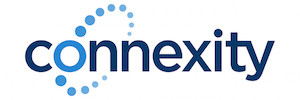The Era of Programmatic Creative

Engaging consumers in the era of programmatic creative relies on data and automated technology. In this piece, Jamie Evans-Parker, CEO and founder of wayve, (pictured below) suggests how marketers can create the perfect mixture.
Nearly a decade has passed since programmatic emerged onto the digital advertising scene, revolutionising targeting capability and efficiency by automating ad trading. Although initial uptake was slow, marketers are now readily embracing the technology – its portion of ad spend will exceed £2bn next year in the UK alone.
Programmatic itself is showing signs of maturity, allowing marketers to reach increasingly specific audiences in real-time; while enabling publishers to maximise their digital assets and win bids from brands through indirect sales. But it’s crucial for marketers to ensure that the heavy focus on campaign scale does not come at the expense of creativity.
Brands are beginning to realise that, while delivering a highly targeted campaign at an auction price is great, powerful and relevant creative is crucial to achieve the desired impact. A new era of digital advertising is dawning, where programmatic and creative combine to create far-reaching and captivating campaigns.
So, how can marketers marry accurate data insight, automated technologies, and creativity to engage consumers?
Joining forces to improve targeting
As demand for a seamless, tailored and cross-screen online experience has increased; disparate tech forces have combined their strengths. The collision of martech and ad tech has brought together in-depth audience insight and sophisticated campaign execution, enabling marketers to achieve a new level of audience segmentation and precise targeting. Creative messages can be tailored to suit niche audiences, while lookalike audiences can be targeted using data collected from previous consumer interactions.
Making creative content personal
Programmatic creative solves the ultimate problem of modern advertising: how to reach the right audience and ensure ad content is engaging for individuals. Using technology such as dynamic creative — a tool that automatically selects and combines creative assets according to real-time context — ads can be adapted and optimised to sequential, geographic, and demographic factors, as well as CRM data. The result is highly relevant creative that drives personal interactions and therefore, campaign performance. A strong example of dynamic creative in action is Pantene’s ‘Haircast’ campaign, which saw the brand team up The Weather Channel in Australia to deliver hair care solutions that instantly aligned with the current climate via geo-targeting as consumers checked the forecast on their mobile devices.
Understanding audience needs in real-time
The union of marketing data and automated ad tech has also created a 360-degree view of consumers. With a detailed understanding of consumer activity, marketers can pinpoint their position in the sales funnel — determining whether consumers are researching, considering buying or if they have already purchased. This information enables marketers to ensure that creative messaging matches consumer needs at each and every stage of their journey.
—-
Full article available at http://bit.ly/1Q53Jbr (link is external)


